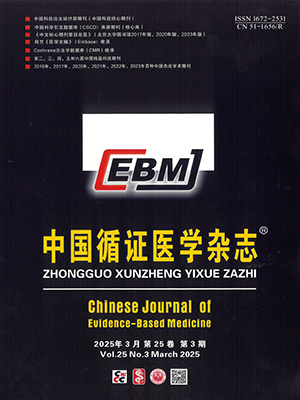Objective To evaluate the analgesic effect of intra-articular ropivacaine with lidocaine.
Methods A double-blind randomized controlled trial was conducted. Ninety patients receiving selective knee arthroscopy were randomized into three groups of 30 patients. At the end of the operation, before the release of the tourniquet, an intra-articular injection was administered to each patient through arthroscope, in accordance with their random allocation: 0.9% normal saline (normal saline group); 100 mg ropivacaine (ropivacaine alone group) and 100 mg ropivacaine and 100 mg 2% lidocaine (ropivacaine with lidocaine group). Pain intensity was assessed after the operation using the 100-mm visual-analog scale (VAS), and the amount of supplemental analgesics used within the following 24 hours were recorded.
Results The VAS scores of 2 hours postoperatively at rest, and 1, 2, 4, and 8 hours postoperatively at motion, were significantly higher in the normal saline group than in ropivacaine alone group (P lt;0.05). The VAS scores 0.5, 1 and 2 hours postoperatively at rest, and at the awaking moment, 0.5, 1, 4, 8, and 24 hours postoperatively at motion, were significantly higher in the normal saline group than in ropivacaine with lidocaine group (P lt;0.05).
Conclusion Intra-articular ropivacaine can reduce a patient’s pain after operation. The combination of lidocaine with intra-articular ropivacaine can reduce the patient’s pain severity immediately after the operation and achieve an early analgesic effect.
Citation:
WANG Jian,XU Li,ZHANG Lan,LUO Linli. Effect of Ropivacaine With Lidocaine on Postoperative Analgesia for Knee Arthroscopy: A Randomized, Double-blind, Placebo-controlled Trial. Chinese Journal of Evidence-Based Medicine, 2006, 06(8): 557-562. doi:
Copy
Copyright © the editorial department of Chinese Journal of Evidence-Based Medicine of West China Medical Publisher. All rights reserved
| 1. |
Rosseland LA, Helgesen KG, Breivik H, et al. Moderate-to-severe pain after knee arthroscopy is relieved by intraarticular saline: a randomized controlled trial. Anesth Analg, 2004 ; 98(6):1546-1551.
|
| 2. |
Dye SF,Vaupel GL,Dye CC. Conscious neurosensory mapping of the internal structures of the human knee without intraarticular anesthesia. Am J Sports Med, 1998;26 (6):773-777.
|
| 3. |
Convery PN, Milligan KR, Quinn P, et al. Efficacy and uptake of ropivacaine and bupivacaine after single intra-articular injection in the knee joint. Br J Anaesth, 2001 ;87(4):570-576.
|
| 4. |
Franceschi F, Rizzello G, Cataldo R, et al.Comparison of morphine and ropivacaine following knee arthroscopy. Arthroscopy, 2001;17(5):477-480.
|
| 5. |
Muller M, Burkhardt J, Borchardt E, et al.Postoperative analgesic effect after intra-articular morphine or ropivacaine following knee arthroscopy - a prospective randomized, doubleblinded study. Schmerz, 2001;15(1):3-9.
|
| 6. |
Rosseland LA, Stubhaug A. Gender is a confounding factor in pain trials: women report more pain than men after arthroscopic surgery. Pain, 2004;112 (3): 248-253.
|
| 7. |
Reiz S, Haggmark S, Johansson G, et al.Cardiotoxicity of ropivacaine-a new amide local anesthetic agent. Acta Anaesth Scand, 1989;33 (2):93-98.
|
| 8. |
Feldman HS, Arthur GR, Covino BG. Comparative systemic toxicity of convulsant and supraconvulsant doses of intravenous ropivacaine ,bupivacaine and lidocaine in the conscious dogs. Anesth Analg,1989;69 (6):794-801.
|
| 9. |
Cederlhom I, Evers H, Lofstrom JB. Skin blood flow after intradermal injection of ropivacaine in various concentrations with or without epinephrine evaluated by laser Doppler flow-metry. Reg Anesth, 1992;17 (6):322-328.
|
| 10. |
Martinsson T, Haegerstrand A, Dalsgaard CJ. Effect of ropivacaine on eicosanoid release from human granulocytes and endothelial cells in vitro. Inflamm Res, 1997;46 (10):398-403.
|
- 1. Rosseland LA, Helgesen KG, Breivik H, et al. Moderate-to-severe pain after knee arthroscopy is relieved by intraarticular saline: a randomized controlled trial. Anesth Analg, 2004 ; 98(6):1546-1551.
- 2. Dye SF,Vaupel GL,Dye CC. Conscious neurosensory mapping of the internal structures of the human knee without intraarticular anesthesia. Am J Sports Med, 1998;26 (6):773-777.
- 3. Convery PN, Milligan KR, Quinn P, et al. Efficacy and uptake of ropivacaine and bupivacaine after single intra-articular injection in the knee joint. Br J Anaesth, 2001 ;87(4):570-576.
- 4. Franceschi F, Rizzello G, Cataldo R, et al.Comparison of morphine and ropivacaine following knee arthroscopy. Arthroscopy, 2001;17(5):477-480.
- 5. Muller M, Burkhardt J, Borchardt E, et al.Postoperative analgesic effect after intra-articular morphine or ropivacaine following knee arthroscopy - a prospective randomized, doubleblinded study. Schmerz, 2001;15(1):3-9.
- 6. Rosseland LA, Stubhaug A. Gender is a confounding factor in pain trials: women report more pain than men after arthroscopic surgery. Pain, 2004;112 (3): 248-253.
- 7. Reiz S, Haggmark S, Johansson G, et al.Cardiotoxicity of ropivacaine-a new amide local anesthetic agent. Acta Anaesth Scand, 1989;33 (2):93-98.
- 8. Feldman HS, Arthur GR, Covino BG. Comparative systemic toxicity of convulsant and supraconvulsant doses of intravenous ropivacaine ,bupivacaine and lidocaine in the conscious dogs. Anesth Analg,1989;69 (6):794-801.
- 9. Cederlhom I, Evers H, Lofstrom JB. Skin blood flow after intradermal injection of ropivacaine in various concentrations with or without epinephrine evaluated by laser Doppler flow-metry. Reg Anesth, 1992;17 (6):322-328.
- 10. Martinsson T, Haegerstrand A, Dalsgaard CJ. Effect of ropivacaine on eicosanoid release from human granulocytes and endothelial cells in vitro. Inflamm Res, 1997;46 (10):398-403.




